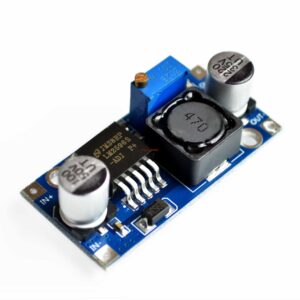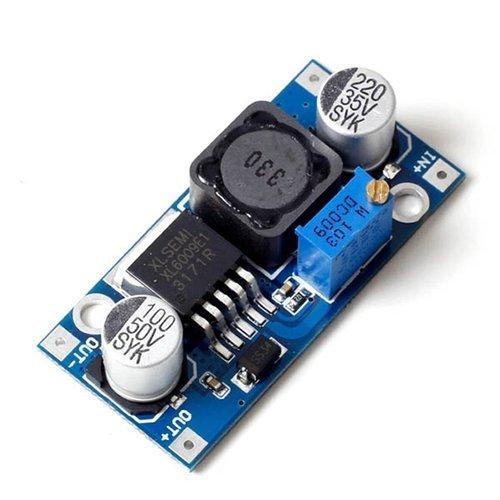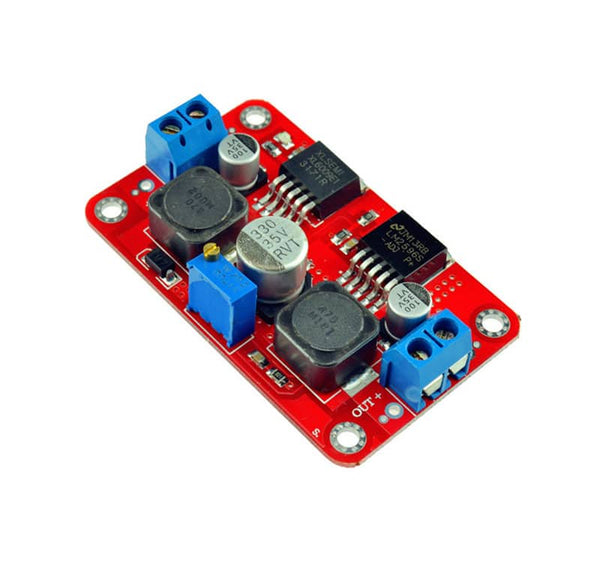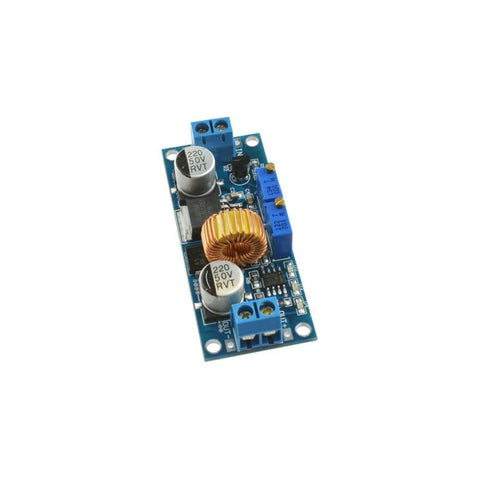Different power module types explained.
As an electronic hobbyist, you're probably aware of the different types of power modules available on the market. But do you know the differences between a step-up electronics module, a step-down electronics module, a buck-boost electronics module and an adjustable power module? Or how about adjustable and constant current power modules? If not, then this blog post is for you! I'll explain the basics of each type of power module so that you can make an informed decision about which is suitable for your next project.
So let's get started...
Power modules mainly adjust voltages, but their current and voltage range is also essential.
When power modules are mentioned, it's easy to focus solely on their ability to adjust voltage since that's the most obvious power control feature. However, power module current is just as important, if not more so, when we're talking power electronics.
If the device you want to use needs a lot of power, you will need a power module that can handle that required current. If you choose a too-small power module for what you will need, the power module will heat up and break.
So look at the spec and never operate on a module's maximum or minimum values. For example, if your project needs 1A current, do not go for a power module that is 1A max. Go for a 1.5A module. It will be more expensive but will last much longer.
Different power modules work in different voltage ranges. Ensure the module's input and output range fall in your required voltage range.
With the above data, I am sure you will understand why there are so many different power modules. On our site, we have more than 50 different types.
Step-down power modules, also called buck power modules
A step-down electronics module reduces the input voltage to a lower output voltage. This power module can be used in many applications, such as electronic lighting, portable devices and audio/video equipment. Like step-up modules, step-down modules are typically rated by their maximum input and output voltages and the current they can handle.
Step-down electronics modules are like mini voltage supervisors, bringing order to the chaos of too-high voltage and helping us keep our devices safe. That high voltage power source you’re working with? No problem—a step-down module will bring it down a notch, giving you the option to use what your devices need.
Step-up power modules also called boost power modules.
A step-up electronics module is designed to increase the voltage from a lower input to a higher output level. This power module is often used in solar cell charging, DC-DC converters and battery chargers.
It is important to know that if you want to step up a voltage, more current will be used by these power modules to generate the higher voltage. Ensure that your power source has enough current available to compensate for the current loss and still has enough current available to drive your project. If your project, for example, requires 1A, make sure your power source can generate 2A to compensate for the current loss while stepping up the voltage.
Buck-boost also called a step-up step-down module
The buck-boost electronics module is similar to the step-up and step-down modules, as it can increase and decrease the input voltage. This type of power module can be used for various applications where the input can drift higher and lower than required.
A good example is solar panels. The panels can produce too many volts with peak sun, and with too little sun, not enough volts. The buck-boost module will keep the voltage stable at the preset voltage as it steps up or decreases the voltage from the solar panels. The buck-boost module is typically rated according to the maximum current it can handle and the minimum and maximum output voltages.
Adjustable and fixed power modules
All of the above-mentioned modules can be either fixed or adjustable. Most of them are adjustable.
Adjustable power modules are versatile in that they allow you to manually adjust the output voltage from a range of different levels. Adjustable power modules are usually used in motor speed control, lighting dimmers etc. They are typically rated by their maximum output current capacity and minimum and maximum output voltages.
Adjustable power modules are great problem solvers for those of us who prefer to be in the driver’s seat. You can think of it like a creative toolkit: with adjustable power modules, you have customizable options for output voltage, allowing you to tweak your project just the way you like it. Plus, what could be more satisfying than optimizing your project for maximum performance?
Fixed voltage modules can not be set, and you will have an exact voltage at the output side. These voltages are often 3.3V, 5V, 9V, 12V and 24V. It sounds limiting, but where you need a precise voltage, you can choose one without having to fiddle with a multimer to adjust it to the correct voltage.
Constant current modules.
Constant current power modules regulate the flow of electricity in a circuit, ensuring that the current remains constant regardless of changes in voltage or load.
These modules come in a variety of shapes and sizes, from small step-down converters to large DC-DC buck converters. They can be used to control both voltage and current, allowing users to adjust the output as needed. Some models also feature adjustable current limiting features, which help protect against overloads and short circuits.
They are typically used in battery charging projects and LED lights.
Conclusion
So that's a brief overview of the different types of power modules available on the market. Now you should better understand which type is right for your next project.
I hope this article has helped clear up some of the confusion around voltage regulators and what they do. If you have any questions or need help choosing the right one for your project, feel free to reach out to us. And if you're looking for more great content like this, be sure to subscribe to our bi-monthly new product, project and article rundown. We'll send you a bi-monthly round-up of all our new blog posts, product releases and projects so you can stay up-to-date on everything happening at Bot Shop.




Different power module types explained.